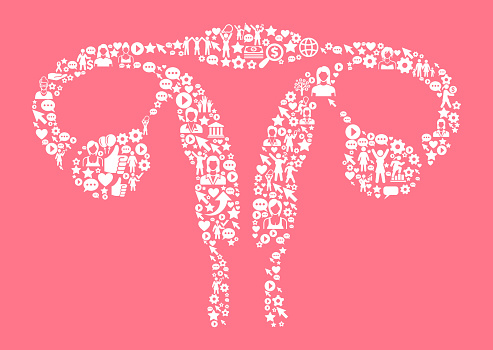“The change” as labelled by our Golden Girl Blanche Deveraux, the thing women still get to look forward to after enduring ~468 periods, and many hours of labour. The root of all our problems: MEN-opause (I should be a comedian).
Menopause often occurs in women between the ages of 45 – 55. Symptoms can range from having none, to having severe symptoms that interfere with one’s everyday life. Most women will experience some symptoms, which is why it is becoming increasingly more important to stop stigmatizing menopause and to open the conversational flood gates between women. Common symptoms include hot flushes, night sweats, aches and pains in the joints and vaginal dryness. As I am a dietitian I won’t be advising on HRT/MHT (hormonal replacement therapy or menopausal hormone therapy) as it is outside my scope but please do discuss this with your GP and healthcare team to decide which course of action is best for you.
What I will cover of course is important foods to include during menopause.
Calcium & Vitamin D
You reach your peak bone density at around 25 years of age, meaning that everything you or parents did in those first 25 years of life will be crucial for the rest of your life. During menopause, your bone density halves, putting you at risk of osteoporosis if your bone density was not so great to begin with. This means you should be including calcium and vitamin D in your diet.
Vitamin D is produced by the body when sunlight touches the skin and helps with calcium absorption. Unfortunately, there are not many foods that contain high levels of vitamin D.
It is important to get regular bloods taken to check your vitamin D status, so you can correct any deficiencies or low levels sooner rather than later.
Common foods to find calcium are:
- Fortified plant-based milks
- Cheese, Milk, Yoghurt
- Small, canned fish (e.g sardines)
- Almonds
- Dark leafy greens (spinach and kale)
- Edamame & Tofu
Common foods to find vitamin D:
- Egg yolks
- Oily fish (salmon, mackerel, herring, sardines)
- Fortified margarines/butters
- Red meat
- Mushrooms
- Fortified Milk & Cereals
Wholegrain Carbohydrates and Fruit & Vegetables
Another underrated food group is FIBRE. You will find that most information on the internet demonizes carbohydrates. They are looked at as the culprit for E V E R Y T H I N G.
With claims such as “Weight gain, gluten and wheat are the devil” or “Carbs cause cancer” AND THE LIST GOES ON.
Fibre is found in a lot of our carbohydrate foods. The best source of carbohydrates are in our wholegrain foods. Wholegrain foods are great for our gut health, regular bowel movements, and keep us feeling full when we eat. There is even research that says consuming wholegrains can be protective against heart disease and bowel cancer.
Regular intake of wholegrains should be easy when you can choose from the following list which are wholegrain foods:
- Wholemeal wholegrain bread
- Barley
- Bulgur
- Freekeh
- Brown rice
- Brown pasta
- Oats
- Wholemeal/wholegrain crackers
- Popcorn
You can also find fibre in fruit and vegetables and consuming 5 serves of vegetables and 2 serves of fruit daily, is protective against multiple cancers and cardiovascular disease. During menopause, many women have trouble maintaining their weight, and report feeling like they have gained weight. Following general healthy eating principles of a diet high in wholegrains, fruit and vegetables can prevent the associated weight gain. However, even if you do gain weight – that is OK. Your everyday eating and exercise behaviours are much more important than what a number on a scale shows.
Low Saturated Fat
Another issue that often pops up during menopause/post menopause is an increase in cholesterol. You’ve gone to the doctor, had a high cholesterol result and often the doctor will tell you to “work on that”. You walk out and you’re like “yes. I will work on that….” Realising that you have NO IDEA what you’re supposed to be doing to “work on that”. Contrary to popular belief, cholesterol levels are not solely affected by cholesterol containing foods (i.e. egg yolks). It is the saturated and trans fat content of meals that contributes to high cholesterol.
This includes:
- Full fat dairy (milk, cheese, cream, ice cream)
- Fatty cuts of meat
- Takeaway foods (pizza, burgers etc)
- Deep fried foods
- Butter
- Processed baked goods (biscuits, pastries, cakes, pies)
- Coconut oil, palm oil and palm kernel oils
To lower cholesterol, you should aim to consume less of the above foods, and to include more fruit, vegetables, and wholegrains (everything I have just mentioned already – it really is a domino effect). It is recommended that you swap to extra virgin olive oil where you can, and possibly a cholesterol lowering margarine (Nuttelex Pulse, or Flora Proactive). You will be surprised at what a large difference just a few small changes can make! Now for the final category of what to eat during menopause, but definitely not the least important:
Phytoestrogens
These are plant-based oestrogens! As most of us would be aware, oestrogen is one of the major female hormones, and it is one that decreases when we reach menopause. Eating phytoestrogens during menopause can assist with managing some of the unwanted symptoms as they act like the hormone oestrogen in the body.
There are 3 categories of phytoestrogens that we can include in our diets:
– Isoflavones (foods like soy, and legumes)
– Coumestans (foods include split peas, pinto beans, lima beans, alfalfa and clover sprouts)
– Lignans (foods include various vegetables and fruits, wholegrain foods, sesame and flax seeds).
Whatever symptoms you are experiencing during menopause, remember that you aren’t alone and utilise your healthcare team (GP, gynaecologist, pharmacist etc.).
Until next time,
Big Sis x
For more information, please check out (my favourite) the Jean Hailes website https://www.jeanhailes.org.au/health-a-z/menopause/menopause-management


